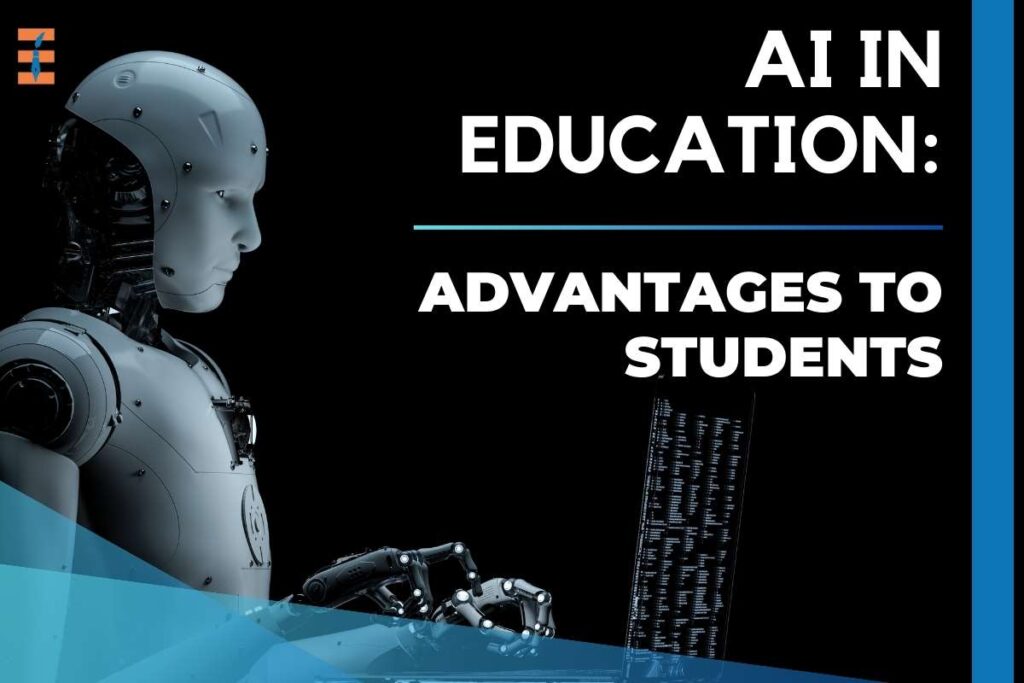AI in education is becoming the talk of the town lately. This is a major step towards imparting education to students. The teaching process and the learning abilities of children will see a major shift when AI is implemented. Some schools are already using AI in their classrooms to clarify the concepts better to the students. The learning experience of students will be better and schools will be able to formulate newer strategies to teach.
As AI in education is new for everyone, schools can conduct meetings, and discuss ways and means on how to use AI while teaching, and how it will benefit the students. The invasion of AI has revolutionized the way students grasp concepts and the way teachers teach. AI is becoming an increasingly important way of our daily lives. It provides students with a more personalized and engaging learning experience.
AI in Education: Transforming Learning for the Better
AI in education is not just a passing trend; it is a transformative force that can significantly improve the way students grasp their school syllabus. With personalized learning, immediate feedback, and intelligent tutoring, AI ensures students receive the support they need. The infrastructural changes required for implementation are essential, as are effective teaching strategies that maximize AI’s potential. In return, schools can enjoy numerous benefits, from enhanced engagement to efficient administration and data-driven improvements. The integration of AI in education is not just about technology; it’s about creating a brighter future for students by revolutionizing the way they learn.
How AI in Education Can Help Students Grasp the School Syllabus?
AI in education brings a range of tools and technologies:
1. Personalized Learning
AI algorithms can analyze students’ learning styles and adapt lessons accordingly. This personalized approach ensures that students receive content at a pace and in a manner that suits their unique needs, enhancing comprehension.
2. Immediate Feedback

AI-driven assessment tools provide instant feedback on quizzes, assignments, and exams. This immediate feedback allows students to identify their weaknesses and strengths, helping them focus on areas that need improvement.
3. Intelligent Tutoring Systems
AI-powered tutors can assist students in real time, clarifying doubts and offering guidance as they study. These virtual tutors are available 24/7, providing continuous support.
4. Visual Learning Aids
AI can generate interactive and engaging visual aids, such as 3D models, simulations, and virtual reality (VR) experiences. Visual learning aids can significantly enhance students’ understanding of complex subjects.
Infrastructural Changes for Successful Implementation of AI in Education:
Implementing AI in education requires specific infrastructural changes to ensure seamless integration:
1. Robust Internet Connectivity
High-speed internet is essential for accessing online AI-driven educational platforms. Schools must invest in reliable internet connectivity to support these tools.
2. Hardware and Devices

Schools need to provide students with access to computers, tablets, or other devices to interact with AI-driven educational content.
3. Training and Professional Development
Teachers and staff should receive training to effectively integrate AI tools into the curriculum. Professional development programs help educators harness the full potential of AI.
4. Data Security Measures
Schools must establish stringent data security measures to protect student’s personal information and ensure that AI systems comply with data privacy regulations.
Teaching Strategies for AI Integration in Education:
To successfully implement AI in education, schools can adopt the following teaching strategies:
1. Blended Learning
Combining traditional classroom instruction with AI-driven content can create a well-rounded educational experience.
2. Flipped Classrooms
In a flipped classroom, students engage with AI-powered resources at home, allowing teachers to use class time for more interactive and collaborative learning activities.
3. Project-Based Learning
AI can assist in developing project-based assignments, helping students explore topics in depth while applying critical thinking and problem-solving skills.
4. Collaborative Learning

AI tools can facilitate collaboration among students, promoting peer-to-peer learning and group projects.
Benefits of Implementing AI in Education:
The integration of AI in education offers numerous benefits for students, teachers, and schools:
1. Enhanced Engagement
AI-driven content is often more engaging, fostering a deeper interest in learning and making it easier for students to grasp the syllabus.
2. Customized Learning Paths
AI can adjust content to suit each student’s level and pace, ensuring they fully grasp the material.
3. Teacher Support
AI assists teachers by providing real-time data on student progress, allowing for more informed and targeted instruction.
4. Accessible Learning
AI can provide resources and support for students with special needs, creating a more inclusive learning environment.
5. Efficiency and Time Savings
AI can automate administrative tasks, saving teachers time and allowing them to focus more on instructional activities.
6. Continuous Improvement
AI can generate insights on student performance and curriculum effectiveness, enabling schools to make data-driven improvements.
7. Preparation for the Digital Age
Integrating AI in education prepares students for a future where technological skills are increasingly important.
Overcoming Educational Challenges with AI in Education:
Incorporating AI into the education system is a promising avenue to address some of the challenges faced by students and educators alike. Here are a few specific ways in which AI can help tackle these issues:
1. Learning Disabilities
Students with learning disabilities often struggle with traditional teaching methods. AI can offer customized learning experiences by adapting content to suit individual learning styles. For example, students with dyslexia can receive text-to-speech tools, while those with visual impairments can benefit from AI-powered image descriptions.
2. Language Barriers
In a globalized world, language barriers can be a significant impediment to learning. AI-powered translation tools can instantly convert course materials into multiple languages, making education more accessible to a diverse range of students.
3. Teacher Workload
Teachers often face overwhelming workloads, including grading assignments and tracking student progress. AI can automate many administrative tasks, allowing educators to dedicate more time to interactive teaching and mentoring.
Conclusion
AI in education represents a transformative force that not only helps students better grasp the school syllabus but also addresses many educational challenges. By personalizing learning, streamlining administrative tasks, and creating more engaging content, AI enriches the educational experience for students and teachers. As schools adapt to the required infrastructural changes and implement effective teaching strategies, they can enjoy the wide-ranging benefits of AI integration. The future of education is not just digital; it’s intelligent, data-driven, and geared towards providing the best possible learning experience for every student.










